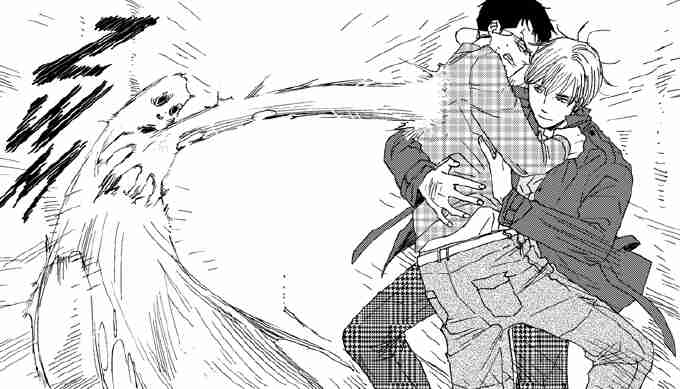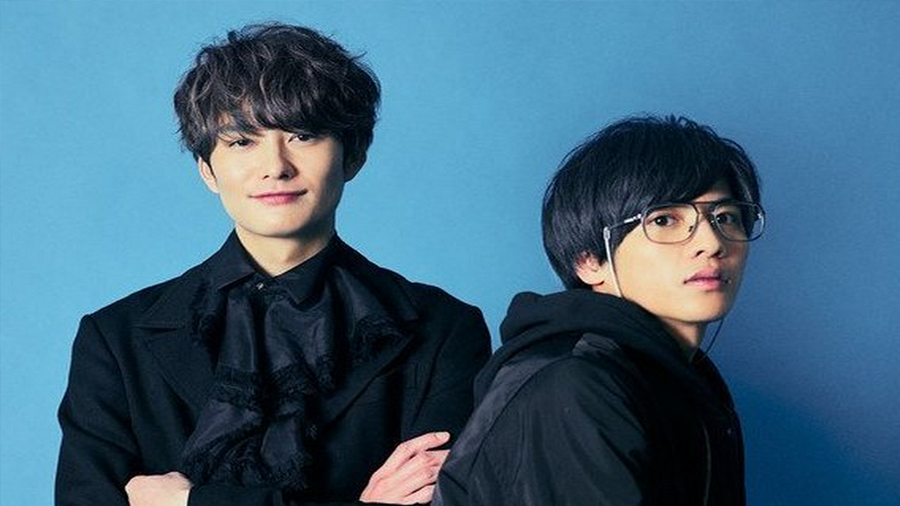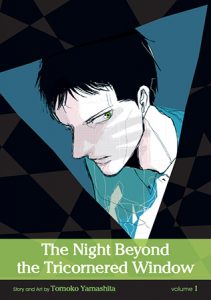
I’d also be remiss if I didn’t mention that pretty much everything else about the show, production-wise, just somehow seems… off, to me. Yes, we get it, touching the soul of another person is analogous to sex, there’s absolutely nothing subtle about the wordplay.
#THE NIGHT BEYOND THE TRICORNERED WINDOW SERIES#
That said, it doesn’t make the series any more palatable to watch, especially because I get the feeling that the show thinks it’s being clever and/or funny with all the sexual innuendo. And hey, maybe that’s the point – the scene in the final couple of minutes where you see him sneakily eat some kind of body part (?) points to some kind of deceptiveness, and for all I know, he could turn out to be the primary antagonist of the series. This episode was choc-full of nonconsensual touching, hugging, and even biting/licking, and I can’t believe I need to say this, but sexual predators just aren’t my thing, you know? The guy has literally no redeeming qualities. I guess my biggest gripe is that Hiyakawa is, frankly, a gigantic creep. I know that sounds unduly harsh but as the resident boys love fan, if even I don’t dig anything about it, something’s likely gone pretty wrong. My problem with this first episode was basically everything.
#THE NIGHT BEYOND THE TRICORNERED WINDOW CRACK#
When he’s approached by Rihito Hiyakawa, an exorcist who works to help crack mysteries or quiet the undead on behalf of both individual clients and the police, the two end up becoming a pair (presumably in more ways than one), combining their powers to solve unconventional and often gruesome cases.Īrtemis’ verdict: Creepy In All The Wrong Ways Kosuke Mikado is a bookstore clerk with the ability to see ghosts, which is unfortunate, because they terrify him. It can also appeal to BL fans who might not usually pick up a horror manga.Alternative title(s): Sankaku Mado no Sotogawa wa Yoru Yamashita’s seamless blending of tropes from BL with atmospheric horror and a compelling mystery makes The Night Beyond the Tricornered Window a great entryway into BL manga even for non-BL fans. Readers need to look hard for these themes, but they lurk everywhere, just like the ghostly creatures in the stories. However, they're never presented as preachy or even obvious. Like Yamashita’s other works, the stories in The Night Beyond the Tricornered Window often contain subtle commentaries about serious social issues, such as isolation in modern life, the power of religion, the effect of bullying, and so on. Of course, there are also plenty of deaths and murder mysteries within the story, but even death scenes are not presented jarringly or gruesomely, but disturbingly matter-of-fact. What's even scarier is these occurrences often come without warning or reason. The true scare comes when you start thinking about the potential horror lurking behind the mundane occurrences that almost everyone has encountered at some point in their lives. They usually look like humans, but just slightly off in one way or another, giving off eerie uncanny valley vibes. Her ghostly creatures are not drawn grotesquely like something from Jujutsu Kaisen. Her style of horror is a type that finds the terrifying within everyday life: the fear of being stared at by random strangers on the street, the feeling of seeing someone for the first time when you’ve known them for a long time, the uncanniness of hearing sounds in an empty room. Unlike, say, the hyper-grotesque works of Junji Ito, Yamashita has a simplistic art style and tries to avoid shocking or gory imagery. The series' style of horror is more psychological. RELATED: Another Is the SCARIEST Anime of All Time This larger narrative adds a great deal of mystery and danger to the overall plot.

There's also an overarching narrative involving an evil antagonist with similar psychic powers going around cursing different people, leading to a lot of mayhem.


It's structured just like any traditional buddy cop story: two protagonists with opposite personalities team up to solve different cases. The Night Beyond the Tricornered Window can be read either as a BL manga, a horror/mystery manga or both.

Tomoko Yamashita is particularly good at telling stories of complex relationships without explicit sex scenes. Despite all the BL elements, the series is still a captivating read for non-BL readers.


 0 kommentar(er)
0 kommentar(er)
